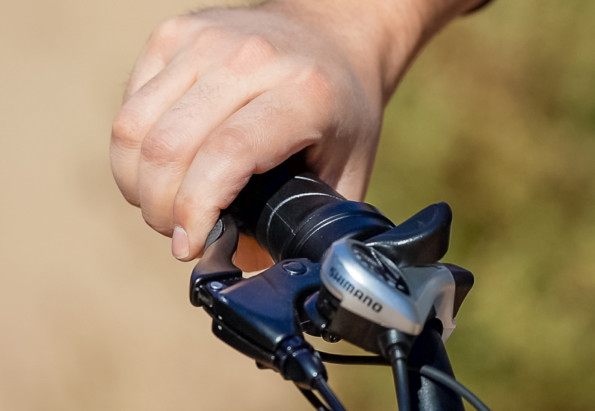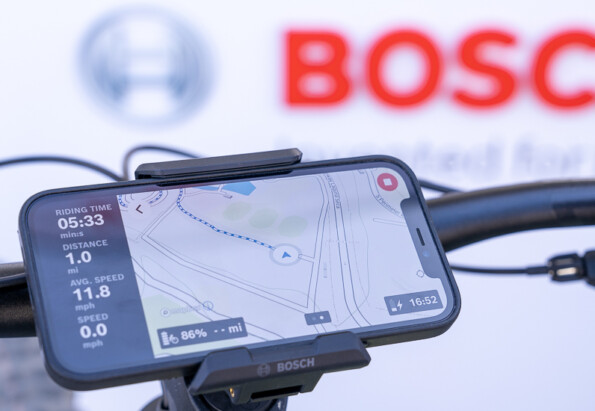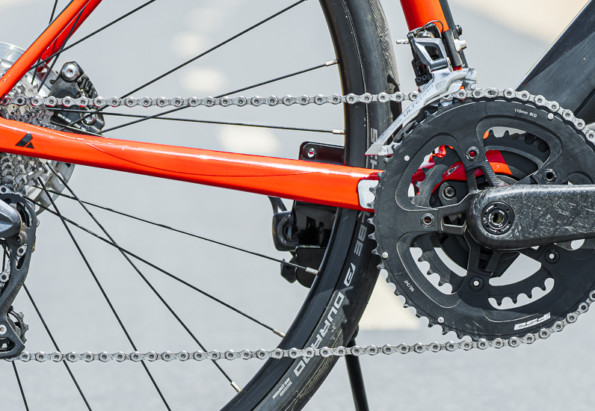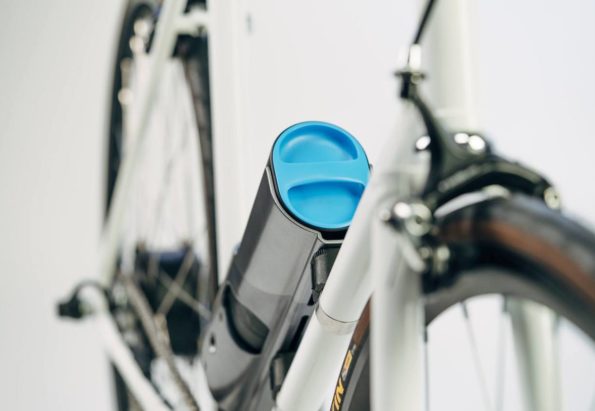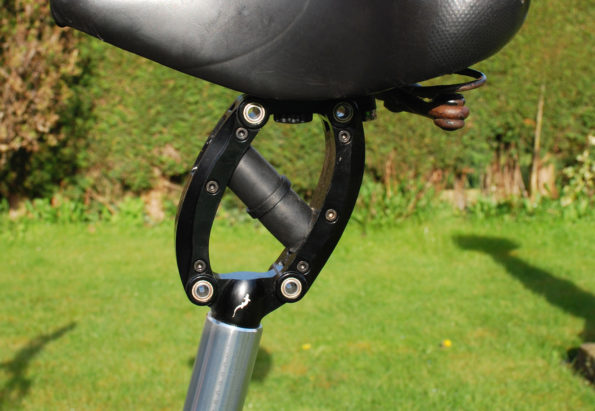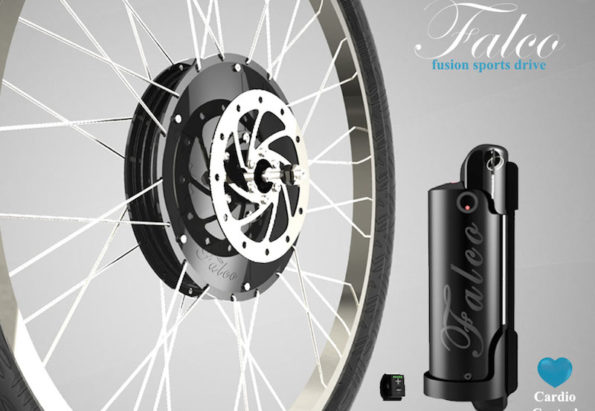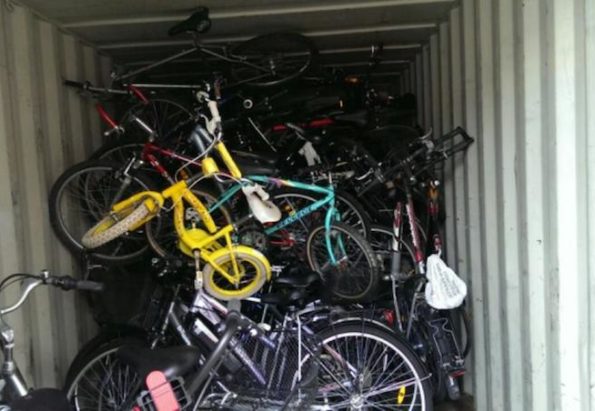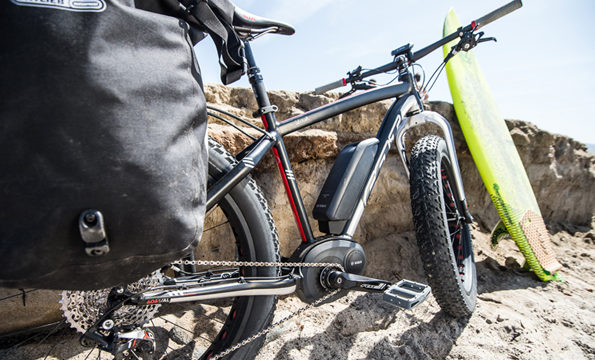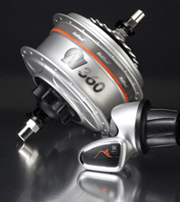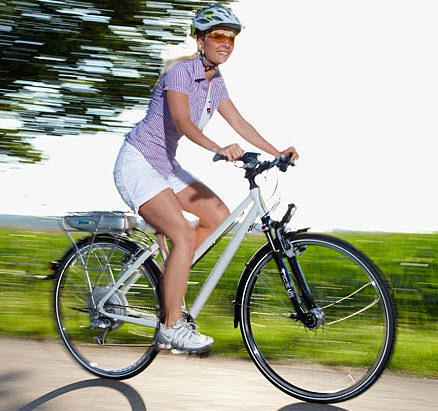Electric Bike Reviews, News, & Testing
Electric Bike Report
Menu
- Electric Bike News
- Electric Bike Reviews
- Black Friday E-bike Deals | Cyber Monday Sales 2024
- Best Electric Bikes by Type
- Best Overall Electric Bikes
- Best Cruiser Electric Bikes
- Best Cheap (Budget) Electric Bikes
- Best Electric Bikes Under $1,000
- Best Electric Cargo Bikes
- Best City & Urban Electric Bikes
- Best Commuter Electric Bikes
- Best Folding Electric Bikes
- Best Fat Tire Electric Bikes
- Best Electric Bikes For Seniors
- Best Electric Bikes For Heavier Riders
- Best Electric Hunting Bikes
- Best Value E-Bikes
- Best Mid Drive Electric Bikes
- Best Moped-Styled E-Bikes
- Best Electric Bikes for Women
- Best Electric Tricycles (E-Trikes for Adults)
- Best E-Bike Repair Stands
- Best Electric Bikes For Kids
- E-Bike Reviews by Type
- Commuter E-Bike Reviews
- City / Urban E-Bike Reviews
- Multi-Use Trail E-Bike Reviews
- Affordable E-Bike Reviews
- Step-Thru E-Bike Reviews
- Folding E-Bike Reviews
- Fat Tire E-Bike Reviews
- Cargo & Utility E-Bike Reviews
- Cruiser E-Bike Reviews
- Gravel E-Bike Reviews
- Mountain E-Bike Reviews (eMTB)
- Road E-Bike Reviews
- Class 3 E-Bike Reviews
- Class 2 E-Bike Reviews
- Electric Bike Brands
- Popular E-Bikes
- Aventon Aventure.2 Review
- Aventon Level.2 Review
- Aventon Pace 500.3 Review
- Blix Sol Eclipse Review
- Electric Bike Company Model R Review
- Electric Bike Company Model S Review
- Evelo Omega Review
- Lectric XP 3.0 Review
- Lectric XP Lite Review
- Lectric XP Trike Review
- Lectric XPeak Review
- Lectric XPedition Review
- Lectric XPremium Review
- Himiway Cruiser Review
- Himiway Zebra Review
- Mokwheel Basalt Review
- QuietKat Jeep Review
- Ride1UP 700 Series Review
- Ride1UP Prodigy V2 LX Review
- Ride1UP Revv 1 Review
- Ride1UP Roadster V2 Review
- REI Co-op Cycles Generation e1.1 Review
- Rad Power Bikes RadCity 5 Plus Review
- Rad Power Bikes RadExpand Review
- Rad Power Bikes RadRover 6 Plus Review
- Rad Power Bikes RadRunner Plus Review
- Radio Flyer M880 Review
- Specialized Globe Haul ST Review
- Specialized Turbo Como Review
- Specialized Turbo Vado Review
- Tenways CGO600 Pro Review
- Velotric Discover 1 Review
- Popular Posts
- eBikes For Older Riders
- What Is The Best Budget E-Bike?
- Hub Motor Brands: The Complete Guide
- Best Car Racks For Electric Bikes – 2021
- Electric Bike Modes: Throttle vs Pedal Assist (Pedelec)
- The Complete Guide to E-Bike Mid-Drive Motors
- Calculating Range on Electric Bikes: How To Find The Long-hauler For You
- E-Bike Batteries: Volts, Amps, & Watt Hours Explained
- A Guide to E-Bike Locks and Security Ratings
- Why You Don’t Want a Superfast Electric Bicycle
- Understanding the Differences Between Direct Drive & Geared Electric Bike Hub Motors
- Understanding the Differences Between Direct Drive & Geared Electric Bike Hub Motors
- Replacement Electric Bike Batteries Guide
- Guide To E-Bike Gearing Systems
- Cargo Trailers for eBikes – The Complete Guide
- The Advantages Of A Lightweight eBike
- Cool Looking Bike Helmets …. Really?!
- Guide To Electric Bike Drivetrains
- Guide To Electric Bike Brakes
- Accessories & Parts
- Learn
- About
- Contact
- Advertise
- E-Bike Organizations & Market Reports
SponsorGuide To E-Bike Gearing Systems
July 15th, 2022Confused by the pros and cons of derailleurs, hub gears and continuously variable transmission? We demystify this subject in...Richard Peace
Guide To Electric Bike Brakes
May 18th, 2022What You Should Know About E-bike Brakes There are lots of companies hyping products that claim to be made...Sam Gross
Bosch releases first Smart System update, debuts new SmartphoneGrip
April 11th, 2022Last August Bosch launched the Smart System, a family of electric bike drive components and a new app poised...Sam Gross
Guide To Electric Bike Drivetrains
May 19th, 2021The 3 E-bike Drivetrain Types: The type of drivetrain you choose for your electric bike will significantly influence how...Sam Gross
New Shimano DU-EP800 Motor – Spec Review
September 1st, 2018The much awaited Shimano EP8 motor dropped today and it is taking the eMTB space by storm. eMTBikers are...Michael Clark
Swappable eBike Batteries? Why The Industry Won’t Make Them For Everyone [VIDEOS]
January 10th, 2018Ever since batteries were first developed for home appliances and toys we have been able to take them out...Guest
Accessory Roundup: Cane Creek Thudbuster, Lightrider Lights, & Blackburn Grid 13 Multitool [VIDEO]
May 10th, 2016Richard Peace takes a look at three products that can enhance your electric bike riding: The Cane Creek Thudbuster suspension...Pete
The Cardio Controlled Falco Fusion Sports E-Bike System [VIDEO]
September 5th, 2014Falco E-Motors has just launched their new Fusion Sports electric bike kit on Kickstarter. This is a unique kit...Pete
50 Stolen Bikes Recovered Thanks to Stromer ST2 Electric Bike GPS & App!
July 18th, 2014Technology to the rescue! Discovering that your prized electric bike has been stolen sucks, but in this day and...Pete
Bosch Introduces Nyon Display, Integrated Shifting, & USA Bosch E-Bikes [VIDEOS]
July 15th, 2014Bosch eBike Systems has made a serious presence in the European electric bike scene and now they are focusing...Pete
New Bafang E-Bike Mid-Drive Systems Offer Energie Cycles Upgrades
November 14th, 2013The new Bafang mid drive motors will be offered on Energie Cycles 2.6t and 2.6tm electric bikes. In...Pete
NuVinci: Something NEW for Bicycle Drivetrain Technology!
January 12th, 2011Last week I was invited to tour the NuVinci design and testing headquarters in Austin, Texas. I was able...Pete
Bionx Electric Bike Kit Review
November 14th, 2010I have ridden many different bikes with the Bionx electric bike conversion kit and I have to say that...Pete
Guides
- Understanding E-Bike Batteries: Volts, Amps, & Watt Hours Explained
- Everything You Need to Know About Electric Bike Batteries Replacement
- The Complete Guide To E-Bike Gearing Systems
- A Comprehensive Guide to Electric Bike Brakes
- The Difference Between Throttle & Pedal-Assist for Electric Bikes
- What Are IP Ratings and Why Do They Matter for E-Bikes
- The Ultimate Guide to Different Types of Certifications for E-bikes
Reviews
- 2024’s Best Electric Bikes Revealed: See Our Top Picks!
- Compact and Efficient: Discover the Best Folding E-Bikes on the Market
- Conquer Any Terrain: Best Fat Tire E-Bikes for Your Next Adventure
- From Groceries to Gear: Best Electric Cargo Bikes for Effortless Hauling
- Revolutionize Your Commute: The Top “Best E-bikes for Commuting” Revealed
- Cruise in Comfort: Best Electric Cruiser Bikes for a Leisurely Ride
- The Ultimate Guide to the Best E-Bikes for Older Adults
- Ditch the Car, Ride the Future: Best E-bikes for Getting Around Town
- Stability and Style: The Top 3 Wheel Electric Bikes Revealed
What’s Trending
- Unveiling the Top Hub Motor Brands Dominating the Electric Vehicle Market
- Decoded: Is 250 Watts Enough Power for Your Ebike?
- Single Speed Electric Bikes: Are They Worth It?
- Geared vs. Direct Drive: E-Bike Hub Motors Detailed Comparison
- The Top 6 Common Mistakes to Avoid When Buying an E-bike
- How Much Does it Cost to Charge An Electric Bike?
- 500W vs. 750W E-bike: Does Wattage Matter on Hills?
- Electric Bike News
- Electric Bike Reviews
- Black Friday E-bike Deals | Cyber Monday Sales 2024
- Best Electric Bikes by Type
- Best Overall Electric Bikes
- Best Cruiser Electric Bikes
- Best Cheap (Budget) Electric Bikes
- Best Electric Bikes Under $1,000
- Best Electric Cargo Bikes
- Best City & Urban Electric Bikes
- Best Commuter Electric Bikes
- Best Folding Electric Bikes
- Best Fat Tire Electric Bikes
- Best Electric Bikes For Seniors
- Best Electric Bikes For Heavier Riders
- Best Electric Hunting Bikes
- Best Value E-Bikes
- Best Mid Drive Electric Bikes
- Best Moped-Styled E-Bikes
- Best Electric Bikes for Women
- Best Electric Tricycles (E-Trikes for Adults)
- Best E-Bike Repair Stands
- Best Electric Bikes For Kids
- E-Bike Reviews by Type
- Commuter E-Bike Reviews
- City / Urban E-Bike Reviews
- Multi-Use Trail E-Bike Reviews
- Affordable E-Bike Reviews
- Step-Thru E-Bike Reviews
- Folding E-Bike Reviews
- Fat Tire E-Bike Reviews
- Cargo & Utility E-Bike Reviews
- Cruiser E-Bike Reviews
- Gravel E-Bike Reviews
- Mountain E-Bike Reviews (eMTB)
- Road E-Bike Reviews
- Class 3 E-Bike Reviews
- Class 2 E-Bike Reviews
- Electric Bike Brands
- Popular E-Bikes
- Aventon Aventure.2 Review
- Aventon Level.2 Review
- Aventon Pace 500.3 Review
- Blix Sol Eclipse Review
- Electric Bike Company Model R Review
- Electric Bike Company Model S Review
- Evelo Omega Review
- Lectric XP 3.0 Review
- Lectric XP Lite Review
- Lectric XP Trike Review
- Lectric XPeak Review
- Lectric XPedition Review
- Lectric XPremium Review
- Himiway Cruiser Review
- Himiway Zebra Review
- Mokwheel Basalt Review
- QuietKat Jeep Review
- Ride1UP 700 Series Review
- Ride1UP Prodigy V2 LX Review
- Ride1UP Revv 1 Review
- Ride1UP Roadster V2 Review
- REI Co-op Cycles Generation e1.1 Review
- Rad Power Bikes RadCity 5 Plus Review
- Rad Power Bikes RadExpand Review
- Rad Power Bikes RadRover 6 Plus Review
- Rad Power Bikes RadRunner Plus Review
- Radio Flyer M880 Review
- Specialized Globe Haul ST Review
- Specialized Turbo Como Review
- Specialized Turbo Vado Review
- Tenways CGO600 Pro Review
- Velotric Discover 1 Review
- Popular Posts
- eBikes For Older Riders
- What Is The Best Budget E-Bike?
- Hub Motor Brands: The Complete Guide
- Best Car Racks For Electric Bikes – 2021
- Electric Bike Modes: Throttle vs Pedal Assist (Pedelec)
- The Complete Guide to E-Bike Mid-Drive Motors
- Calculating Range on Electric Bikes: How To Find The Long-hauler For You
- E-Bike Batteries: Volts, Amps, & Watt Hours Explained
- A Guide to E-Bike Locks and Security Ratings
- Why You Don’t Want a Superfast Electric Bicycle
- Understanding the Differences Between Direct Drive & Geared Electric Bike Hub Motors
- Understanding the Differences Between Direct Drive & Geared Electric Bike Hub Motors
- Replacement Electric Bike Batteries Guide
- Guide To E-Bike Gearing Systems
- Cargo Trailers for eBikes – The Complete Guide
- The Advantages Of A Lightweight eBike
- Cool Looking Bike Helmets …. Really?!
- Guide To Electric Bike Drivetrains
- Guide To Electric Bike Brakes
- Accessories & Parts
- Learn
- About
- Contact
- Advertise
- E-Bike Organizations & Market Reports
-
Privacy & Cookies: This site uses cookies. By continuing to use this website, you agree to their use.
To find out more, including how to control cookies, see here: Cookie PolicyClose and accept

